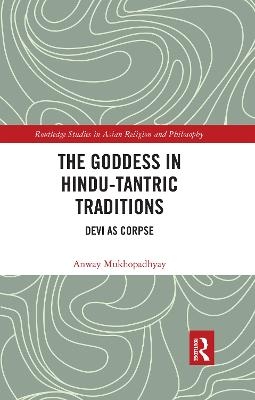
The Goddess in Hindu-Tantric Traditions
Routledge (Verlag)
978-0-367-59110-6 (ISBN)
This book explores the figurations of the Goddess as corpse in several Hindu puranic and Shakta-tantric texts, popular practices, folk belief systems, legends and various other cultural phenomena based on this motif. It deals with a more intricate and fundamental issue than existing works on the subject: how and why is the Devi – herself - figured as a corpse in the Shakta texts, belief systems and folk practices associated with the tantras? The issues which have been raised in this book include: how does death become a complement to life within this religious epistemology? How does one learn to live with death, thereby lending new definitions and new epistemic and existential dimensions to life and death? And what is the relation between death and gender within this kind of figuration of the Goddess as death and dead body? Analysing multiple mythic narratives, hymns and scriptural texts where the Devi herself is said to take the form of the Shava (the corpse) as well as the Shakti who animates dead matter, this book focuses not only on the concept of the theological equivalence of the Shava (Shiva as corpse) and the Shakti (Energy) in tantras but also on the status of the Divine Mother as the Great Bridge between the apparently irreconcilable opposites, the mediatrix between Spirit and Matter, death and life, existence-in-stasis and existence-in-kinesis.
This book makes an important contribution to the fields of Hindu Studies, Goddess Spirituality, South Asian Religions, Women and Religion, India, Studies in Shaktism and Tantra, Cross-cultural Religious Studies, Gender Studies, Postcolonial Spirituality and Ecofeminism.
Anway Mukhopadhyay is an Assistant Professor in the Department of English and Culture Studies at the University of Burdwan, India.
Introduction 1. The Human Death, the Divine Corpse 2. Reinterpreting the Myth of Sati: The Devoted Husband and the Corpse of His Wife 3. Dismemberment as Pluralization: The Scattering of Sati’s Body Parts and the Self-Pluralization of Shiva 4. The Shakti Pithas: The Active Corpse, the Immanent Shakti and the Sacred Geography of Shaktism 5. Shava Sadhana: Who Is the Corpse? Shiva or Shakti? 6. Placing the Devi’s Corpse on the Shore of a Thousand Streams: A Multicultural and Comparativist Reading of the Devi as Corpse 7. Shava-rupa and Vishva-rupa: The Corpse Form and the Cosmic Form of the Devi Appendix I: A Brief Outline of the Narrative of Sati in the Mahabhagavata Upapurana Appendix II: The Narrative of Sati in the Brihaddharmapurana: A Summary Appendix III: An Outline of the Narrative of Sati in Bharatchandra’s Annadamangal Kavya
| Erscheinungsdatum | 01.07.2020 |
|---|---|
| Reihe/Serie | Routledge Studies in Asian Religion and Philosophy |
| Verlagsort | London |
| Sprache | englisch |
| Maße | 138 x 216 mm |
| Gewicht | 453 g |
| Themenwelt | Geisteswissenschaften ► Religion / Theologie ► Hinduismus |
| ISBN-10 | 0-367-59110-3 / 0367591103 |
| ISBN-13 | 978-0-367-59110-6 / 9780367591106 |
| Zustand | Neuware |
| Haben Sie eine Frage zum Produkt? |
aus dem Bereich


